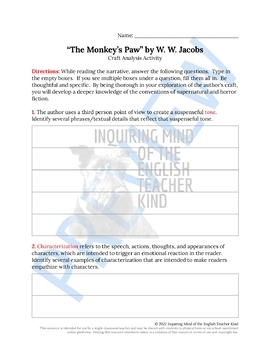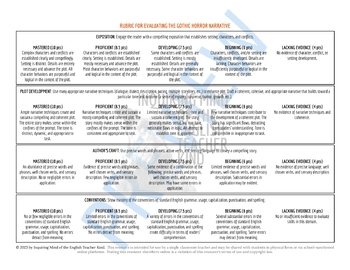Six-Week Summer School Curriculum & Materials for English Credit (Grades 11-12)
- Zip
What educators are saying
Products in this Bundle (17)
showing 1-5 of 17 products
Bonus
Description
Save planning time without sacrificing academic rigor by referencing this comprehensive, standards-based, six-week curriculum map for high school English credit recovery and/or enrichment credit (grades 11 and 12). A day-by-day breakdown of key learning events and instruction contributes to the low-prep nature of this resource. Included are all materials with which students will engage, as well as answer keys and Common Core-aligned rubrics for scoring written work. Materials are delivered in editable Word Document and printable PDF formats. (Alternatively, a Google Drive option is available.)
The first of two units is designed around a single theme (the power of fear and curiosity) and focuses on literature, close reading, character analysis, and academic essay writing. Featured works of fiction are the following:
- "The Wife's Story" by Ursula K. Le Guin
- "Hansel and Gretel" by the Brothers Grimm
- "The Owl" by the Brothers Grimm
- "The Most Dangerous Game" by Richard Connell
- "The Masque of the Red Death" by Edgar Allan Poe
- "In the Vault" by H.P. Lovecraft
- "The Lurking Fear" by H.P. Lovecraft
- "Dr. Heidegger's Experiment" by Nathaniel Hawthorne
The second unit culminates with the development of an original creative narrative in the Gothic genre. To support students in this endeavor, they will read several representative short stories and analyze the authors' craft. Featured works of fiction are the following:
- "The Black Cat" by Edgar Allan Poe
- "The Outsider" by H.P. Lovecraft
- "The Monkey's Paw" by W. W. Jacobs
At the end of six weeks, students will be skilled at the following:
- Inferring characters’ motivations based on their words and actions.
- Applying knowledge of literary devices (e.g., foreshadowing, symbolism, irony) to texts.
- Articulating information and claims with clarity and precision, citing relevant textual details to strengthen and support ideas.
- Discussing literature appropriately, using academic language.
- Analyzing common themes across several texts.
- Conducting brief research on relevant topics
- Identifying sensory and characterization details that contribute to a narrative’s being classified as Gothic horror
- Integrating knowledge gained from research into a work of fiction
- Developing complex characters whose motivations are easily discerned through explicit and implied details
- Developing plot that is logical in the context of the genre
- Applying knowledge of literary devices to an original piece of writing
- Participating in the writing process to fidelity





